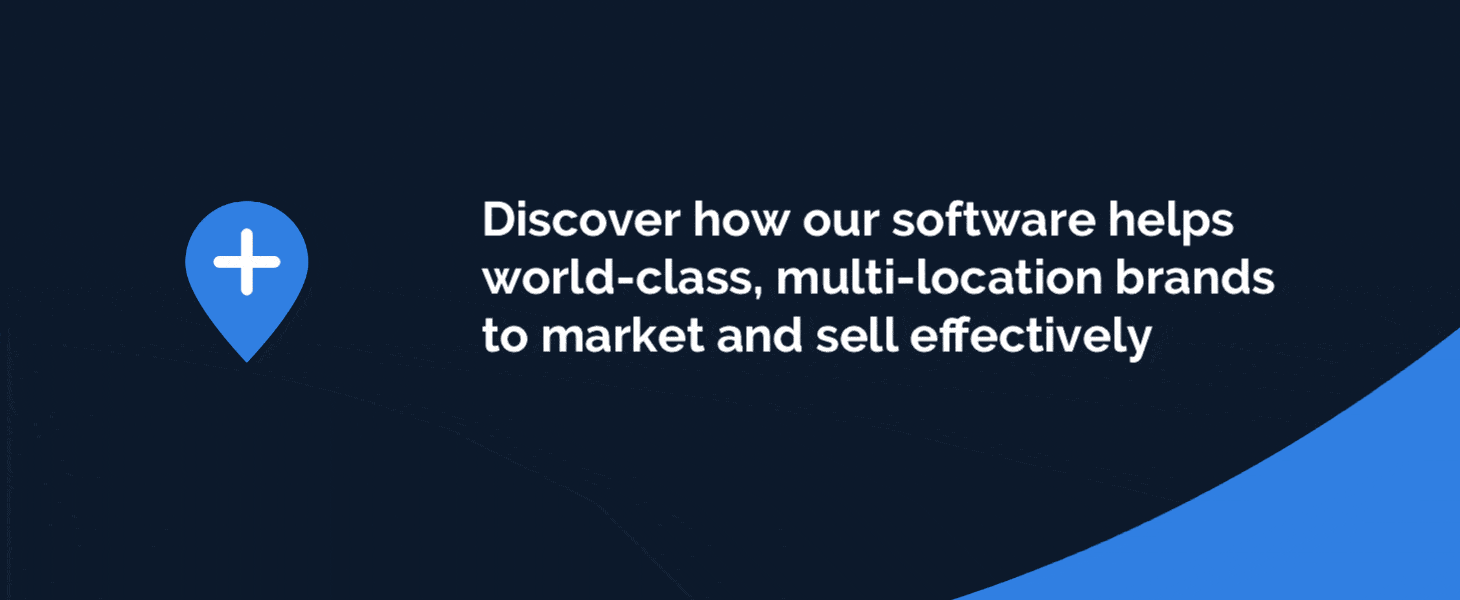As brands adopt more methods of marketing, their digital collateral is expanding at a rapid rate. If your organization is “average,” the amount of digital assets you control has more than doubled since 2002, according to estimates by the Harvard Business Review.
For distributed brand managers, who are responsible for digitally distributing marketing collateral to a large network of local representatives, this expanding collateral can quickly become an overwhelming business challenge. Without a centralized solution for assets, it's nearly impossible to achieve consistency or efficiency in distributed marketing.
Why Your Distributed Brand Needs A Brand Resource Management Tool
Organizations who adopt distributed brand resource tools have different objectives, which can include avoiding risk, a need for faster campaign deployment, and a desire for stronger asset measurement. Their reason could follow the maturity model designed by Earley, which dictates the following stages as common justifications for adopting DAM:
- Reduce Risks
- Achieve Superior Integration for Faster Marketing Execution
- Use Analytics to Understand Behavior and Results
As a distributed organization, your motivation could be similar to this model, or it could be quite different. You may have started thinking about DAM software because you needed a cloud-based way to get assets to your local marketers, and your file transfer protocol site just wasn’t cutting it. You may have needed the templating capabilities of a local marketing automation tool to control for the fact that your local dealerships rarely knew how to use (or even open) InDesign or Photoshop files.
Regardless of “why” you began considering DAM in the first place, the benefits of effective tools for distributed asset management can be far-reaching.
Read on to learn about real benefits that other distributed brands and their local marketing representatives can unlock with the right DAM tool.
1. Metrics and Reporting
As a distributed brand manager, your success is measured by more than just retail sales. You’re also responsible for maintaining a high level of satisfaction among your local marketing representatives, especially if you’re working with franchisees or dealerships. DAM tools allow you to gain insights into both local marketers and customers, and adjust your strategy accordingly.
With digital asset management software in place, you may discover that entire regions of your local outlets aren’t utilizing email marketing (even though you've provided beautiful email templates). You might notice that certain types of photography are used twice as much as other options. DAM offers data points like these that are easy-to-consume, and simple to use as business insights.
2. Productivity and Accessibility
Digital Asset Management enhances productivity and asset usage for every stakeholder involved. In fact, research by Adobe reveals that 97 percent of organizations who adopt DAM experience a 10 percent (or more) boost in productivity, due in part to better asset re-use and faster access to existing assets through search.
For instance, graphic designers see significant efficiency boosts by having the ability to create templates; gaining the ability to turn existing designs into templates, and upload assets in batches. Brand managers are able to approve, tag, and release assets to groups of local marketers based on user permissions. Local marketers can take advantage of easy-to-use template tools and integrations to execute compliant marketing in just minutes. From end-to-end, DAM provides a single solution for asset access and supports a productive workflow.
3. Asset Quality
Distributed marketing organizations face a unique challenge when it comes to local marketing execution. The vast majority of the time, local outlets don’t have an expert designer on staff. Their locals rarely know how to use Adobe Creative tools, or even perform simple graphic design operations like converting the color mode of a photo.
DAM with local templating tools can protect against the natural variations in design quality that are bound to occur when you’re working with non-designers. Responsive templates can scale across print and digital executions, without getting out of proportion or pixelated. The ability to lock fields, and leave others open for editing, as well as limit design editing and color adjustments, helps protect design integrity.
Other ways that DAM tools can protect the visual and brand integrity of your digital assets include:
- Preventing non-compliant use of brand logos and visual identity
- Limiting use of unapproved assets, such as local photography
- Simpler, centralized management of stock photography or brand-owned intellectual property
- Required inclusion of necessary advertising disclosures
4. Communication & Feedback
In a distributed marketing model, miscommunication happens all the time. Local marketers might fail to launch a campaign because they couldn't find the right assets. Brand managers may assume that radio silence from their local outlets means they're satisfied with the quarter’s campaigns. In some cases, these assumptions could be catastrophically false.
DAM is a centralized system for collaboration and feedback. By integrating opportunities for feedback into the workflow, brand managers and local representatives can ensure that information is flowing both ways, and that there is a centralized platform for communicating about brand assets. The result is more transparency and less potential for miscommunication around marketing assets and activities for both brand management teams and local marketers.
5. Brand Management Team Satisfaction
Chances of frustration are high within brand teams struggling with poor methods of marketing collateral management. Your team creates hundreds, if not thousands, of assets each year. Why are you still fielding custom design requests from local marketers? Why are your assets being deployed in the wrong order, inconsistently, late, or with bad design revisions?
DAM tools can improve the branding team's satisfaction with local marketers' compliance and asset adoption. They can significantly speed up your local marketers’ time to execution, based on better availability and easier-to-use templates. Brand teams care about this improvement, as fewer local marketing emergencies mean less frustrations. As you work more efficiently and face fewer one-off requests, you are able to see your hard work translated into local marketing success.
6. Local Marketer Satisfaction
Local marketers have a goal of driving sales, without having to struggle against complicated or confusing brand marketing requirements. They want to log in, view assets that make sense, add their local content, and send the document to their local printer. DAM tools, especially LMAs that provide an easy-to-use interface for end users, can remove the stress and frustration associated with navigating marketing requirements. This allows your local marketers to get their campaigns out the door, and focus on growing their business.
7. Marketing Budget Management
Every distributed organization is trying to make the most of a limited budget. DAM provides a superior way to reuse and access former assets so that you can maximize mileage for your photos and former campaigns, and save your budget for added innovation.
In addition, distributed DAM allows brand management teams to connect metrics to results, on a per-region or per-asset basis. By understanding the print or email templates that are being actively used by your local marketers, you can adjust your strategy to include more of the templates that yield results.
Distributed Brand Resource Management: When Not Just Any DAM Will Do
Distributed organizations have a unique business model, which dictates some pretty specific software requirements. The right DAM for an international franchise organization is going to look very different from a DAM designed for a centralized operation. Your company has to provide a system that’s easy to use and supports local marketing execution.
Distributed DAM needs to make it easy for your brand team to translate assets into easy-to-use templates, and provide a simple, integrated experience for your local partners. With a lightweight, SaaS-based tool designed for distributed DAM, your brand management team can begin unlocking benefits soon after implementation - from an improved ability to measure results to happier franchisees.







